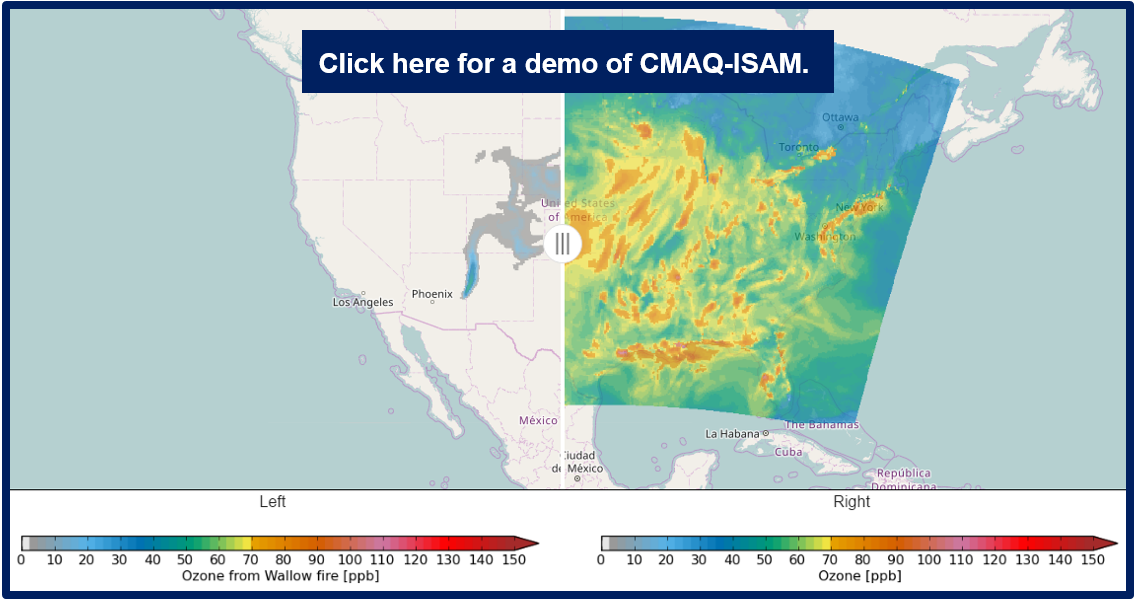The Integrated Source Apportionment Method (CMAQ-ISAM)
The Integrated Source Apportionment Method (ISAM) calculates source attribution information for user specified ozone and particulate matter precursors within the CMAQ model.
The CMAQ model provides users the concentration and deposition fields of many pollutant species. These species are usually combinations of different types of primary emissions and secondary formation that have been physically and chemically transformed in the model. However, sometimes it's desirable to know specific source attribution information for the model outputs. For example, how much of the ozone in an urban area was formed due to nitrogen oxides emitted from motor vehicles in a neighboring state?
Answering this type of question often requires running an air quality model twice, once with the standard emissions scenario and once with the source of interest completely removed. The difference between the two runs is then assumed to be attributed to the removed source. While this approach is reasonably straightforward to implement, it has some drawbacks. For example, removing a large source from the system in a highly nonlinear chemical mixture can lead to some errors. Also, calculating source attribution of many sources can be logistically and computationally complex.
Alternatively, the Integrated Source Apportionment Method (ISAM) is available as a runtime option within the standard CMAQ release that can calculate source attribution of a large number of sources directly by the model in one simulation.
- CMAQ-ISAM is downloadable with the standard release of the model.
- For documentation please refer to the ISAM chapter of the CMAQ User's Guide.

References
Cohan, D.S., & Napelenok, S.L. (2011). Air Quality Response Modeling for Decision Support. Atmosphere, 2(3), 407-425. doi: 10.3390/atmos2030407
Kwok, R.H.F., Baker, K.R., Napelenok, S.L., & Tonnesen, G.S. (2015). Photochemical grid model implementation and application of VOC, NOx, and O-3 source apportionment. Geoscientific Model Development, 8(1), 99-114. doi: 10.5194/gmd-8-99-2015
Kwok, R.H.F., Napelenok, S.L., & Baker, K.R. (2013). Implementation and evaluation of PM2.5 source contribution analysis in a photochemical model. Atmospheric Environment, 80, 398-407. doi: 10.1016/j.atmosenv.2013.08.017
Shu, Q., Napelenok, S., Hutzell, W.T., Baker, K.R., Henderson, B.H., Murphy, B.N., & Hogrefe, C. (2023). Comparison of ozone formation attribution techniques in the northeastern United States, GMD, 16, 2303–2322, https://doi.org/10.5194/gmd-16-2303-2023.
Example ISAM Application
Simon, et al. (2018). Characterizing CO and NOy Sources and Relative Ambient Ratios in the Baltimore Area Using Ambient Measurements and Source Attribution Modeling. Journal of Geophysical Research - Atmospheres, 123(6), 3304-3320. doi: 10.1002/2017JD027688
